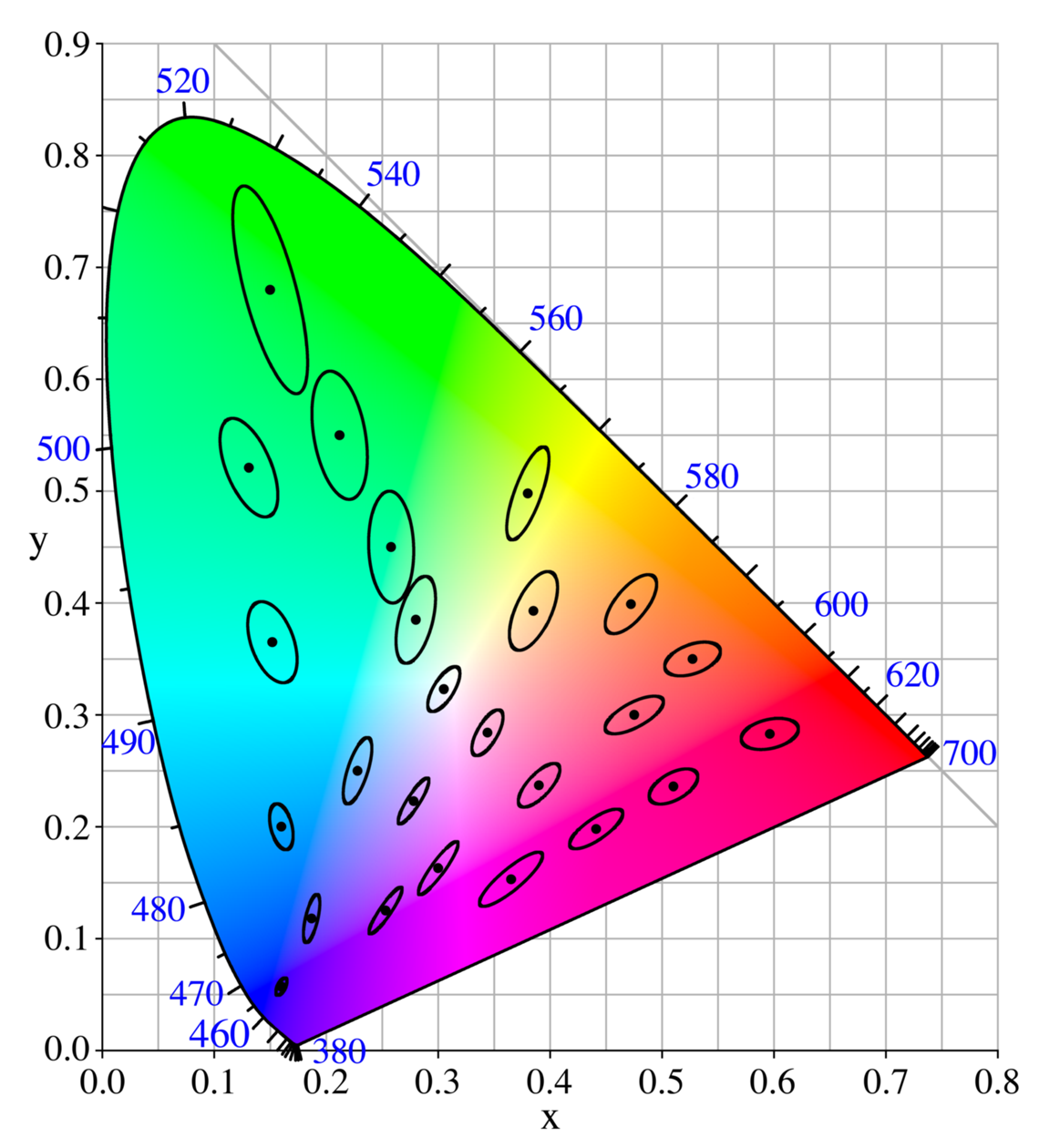
SDCM is an acronym of Standard Deviation Colour Matching, a unit of measurement for color consistency in lighting. SDCM is a statistical measure used in lighting technology to describe how closely the colors of different light sources match each other. SDCM is represented as steps or “MacAdam ellipses” on the CIE 1931 chromaticity diagram, showing the range within which differences in color are indistinguishable to the human eye. A lower SDCM value means better color consistency, with an SDCM of 1 generally considered indistinguishable, while higher values indicate more noticeable color differences.
- Purpose: SDCM is a statistical technique to measure how closely colors match, particularly in LEDs.
- MacAdam Ellipses: It is defined by the MacAdam ellipse, a graphical representation of color differences in a chromaticity diagram that are just noticeable to the human eye.
- Value: A smaller SDCM value indicates greater color consistency, meaning less perceived color deviation from the target color.
- Application: It is crucial for ensuring that multiple light fixtures installed together produce a uniform and consistent color of light, as LEDs naturally vary in their color output.
Application in Lighting
SDCM is a crucial parameter for LEDs and lighting fixtures, as multiple light sources installed side by side should appear uniform in color. For most indoor environments, an SDCM of 2-3 is desirable for good consistency, while up to 5 SDCM may be acceptable in some outdoor applications. High-quality LED products strive for a low SDCM to ensure color uniformity across batches.
Summary Table
| SDCM Steps | Perception |
|---|---|
| 1 | No visible difference |
| 2–3 | Slight to somewhat visible difference |
| 4+ | Visible to strong difference |
SDCM essentially ensures that light from multiple sources looks consistent, which is critical for aesthetic and functional lighting designs.


